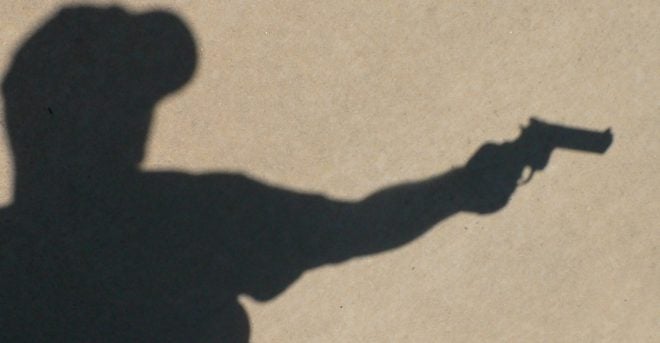In this episode of the First Firearm series, we’ll take a look at the things to consider when buying your first revolver. This series is dedicated to those that are new to gun ownership and looking for their first gun, or for those that are buying the first type of gun that we’re discussing. Let’s take a closer look at the infamous, yet often overlooked revolver.
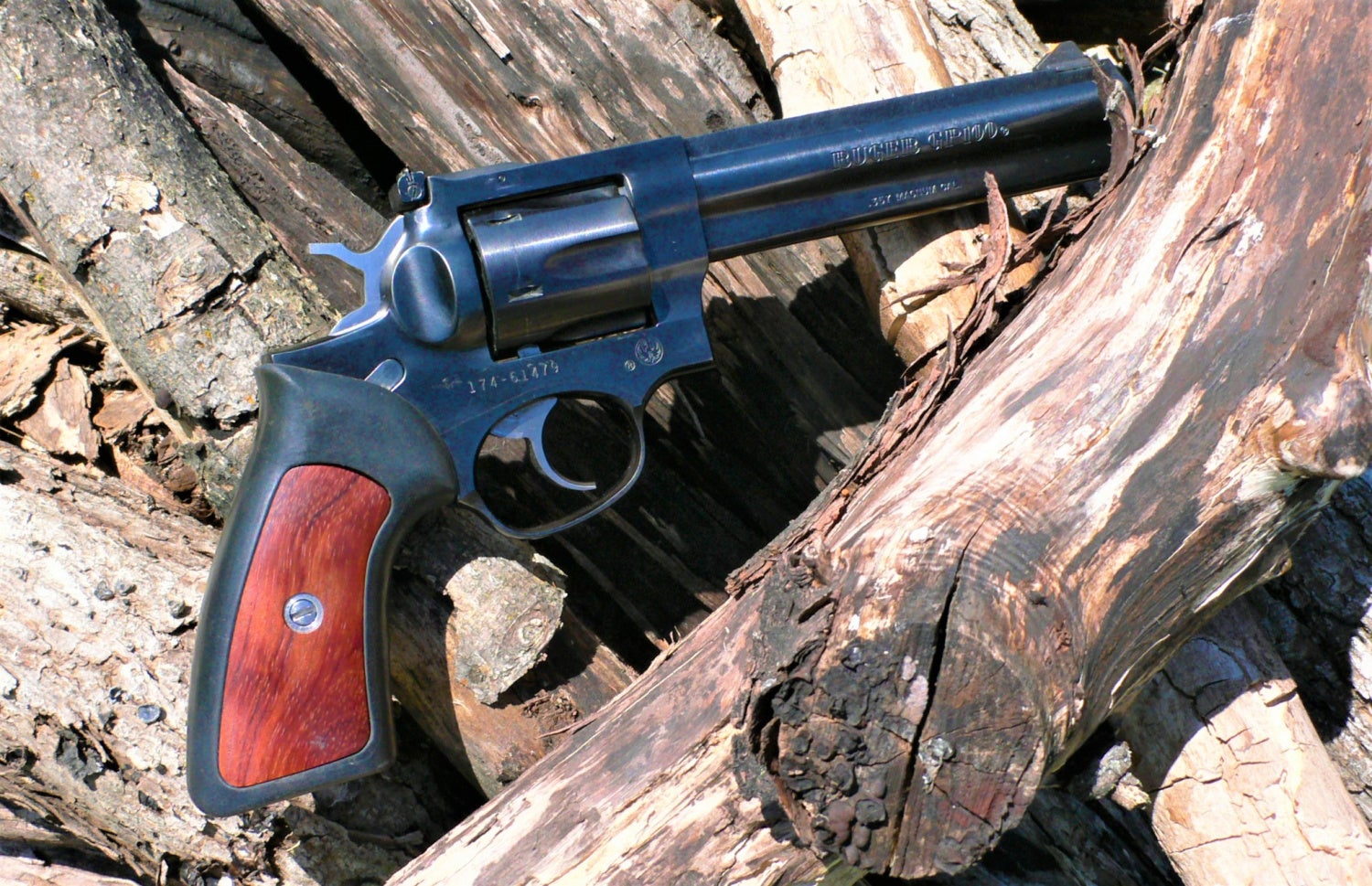
Author’s first revolver, a Ruger GP100 in .357 Magnum.
FIRST FIREARM: REVOLVERS
Does the revolver have a place in the modern world? Even though the technology is relatively old, the short answer is, yes. Revolvers have maintained quite a foothold in society despite the lack of them in military and police armories. Revolvers are still used for self-defense, target shooting, hunting, hiking and a variety of competitions. The biggest strength of the revolver is its strength. This is often overlooked, but the strength of a revolver allows for very powerful loads to be shot from a small package that would be too stressful on most semi-auto pistols.
The economic answer to revolver usage in 2019, is that there are numerous companies like Smith & Wesson and Ruger that haven’t stopped making revolvers. Not only have they not stopped making them, but they keep adding more caliber and configuration options. Kimber jumped into the revolver market several years ago, and Colt jumped back into the market soon after. I dare to say that revolvers will survive into the 22nd Century.
Click HERE to see TFB revolver coverage.
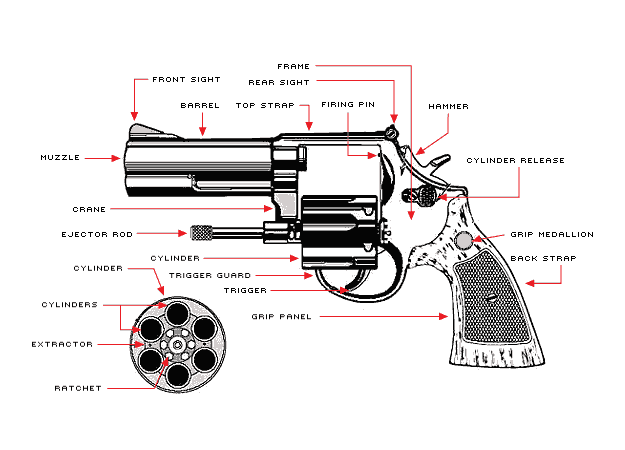
Diagram of Double Action revolver. Image from www.ballistics101.com
SAFETY with your first revolver
Each type of firearm has a safe way of handling and can be dangerous if not used properly. Revolvers have a unique safety concern in the name of the “cylinder gap”. This gap between the barrel and the chambers where the cartridge is fired allows the cylinder to rotate. The gap also allows high-pressure gas from the ignited gun powder to escape, which can be dangerous if you allow your hand or fingers to creep up too close to the gap. With a proper grip on the revolver, there’s nothing to worry about and you can shoot to your heart’s content… or your wallet’s content, which ever comes first. Hickock45 on YouTube demonstrated this potential problem in the video below.
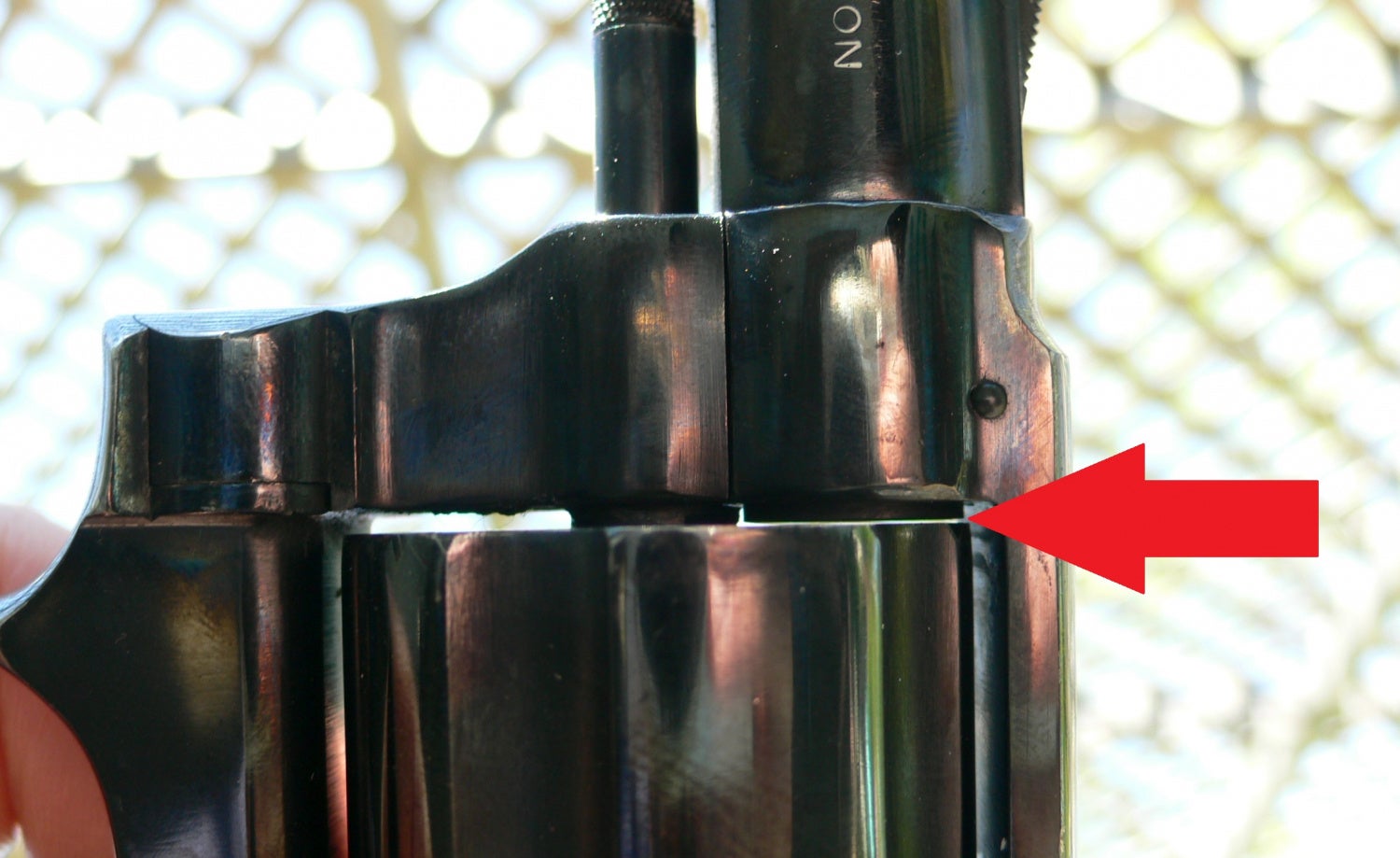
Photo of the Cylinder Gap. Keep hands and fingers out of the path of the rapidly expanding gasses coming from this gap while shooting.
revolver OPERATION
There are two main types of revolvers: Single Action (SA) and Double Action / Single Action (DA/SA).
Single Action revolvers are most associated with the Old West. The SA designation means that the trigger has one function, and that is to release the hammer which ignites the cartridge sitting in-line with the barrel. Since the trigger only has the one function, the shooter needs to manually cock the hammer for each shot, which also rotates the cylinder to bring up the next round to the barrel. These types of revolvers are still made today and are used in Western-style competitions. I’ve seen some people comment that they carry them while hiking or while doing farm work. The video below is from VOA News’ YouTube channel. It shows on aspect of competition that can be done with SA revolvers, as well as briefly describes how the action works.
Double Action revolver triggers are capable of two functions of the trigger. With the hammer in the forward position, pulling the trigger will move the hammer back and release it to fire the round in-line with the barrel. During the first action of the trigger, it also rotates the cylinder to bring the next cartridge in line with the barrel. There are exceptions, but most DA revolvers are also capable of SA function as well. The video below is from Nikolas Lloyd on his Lindybeige YouTube channel in which he gives a much more in-depth look at the differences of SA and DA revolvers.
There are several things NOT to do with revolvers to keep them in good working order.
1. Wrist flicking to close the cylinder. Revolvers are “timed” to fire when you want them to, which is when the next chamber to fire lines up directly with the barrel. You don’t want it to fire just out of alignment, or fail to fire because the timing has been damaged. The timing relies on the circular series of angles in the middle of the star. Damaging these by putting undue contact with the lifter can throw the timing out of whack over time. Make sure you treat your first revolver with care.
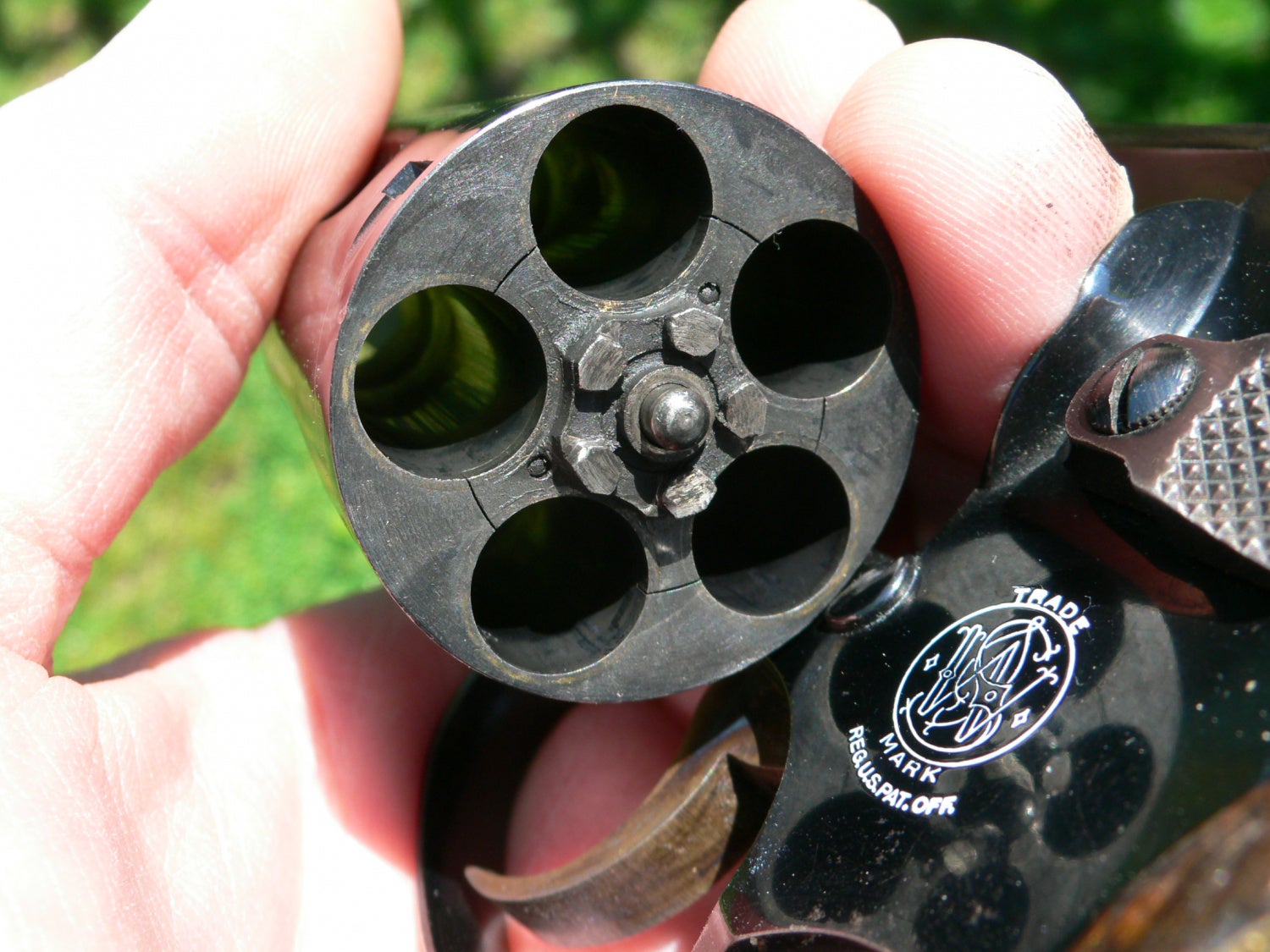
The Cylinder Ratchet is one of the parts that keep the revolver working properly.
2. Don’t bend the ejector rod. As previously stated, keeping your revolver fed requires more manipulation. That manipulation requires the use of an ejector rod that’s straight since it has to be pushed through a hole in the cylinder. Masaad Ayoob produced a short video on how to efficiently eject the spent cases and reload fresh cartridges without damaging the revolver. If you’re new to revolvers or need a refresher, I encourage you to watch the video below from Gail Pepin’s YouTube channel.
LOADING your first revolver
With Double Action revolvers, there are a number of ways to reload the cylinder. The cylinder can be loaded with individual cartridges (one or two at a time), with speedloaders all at once, or with half and full moonclips.
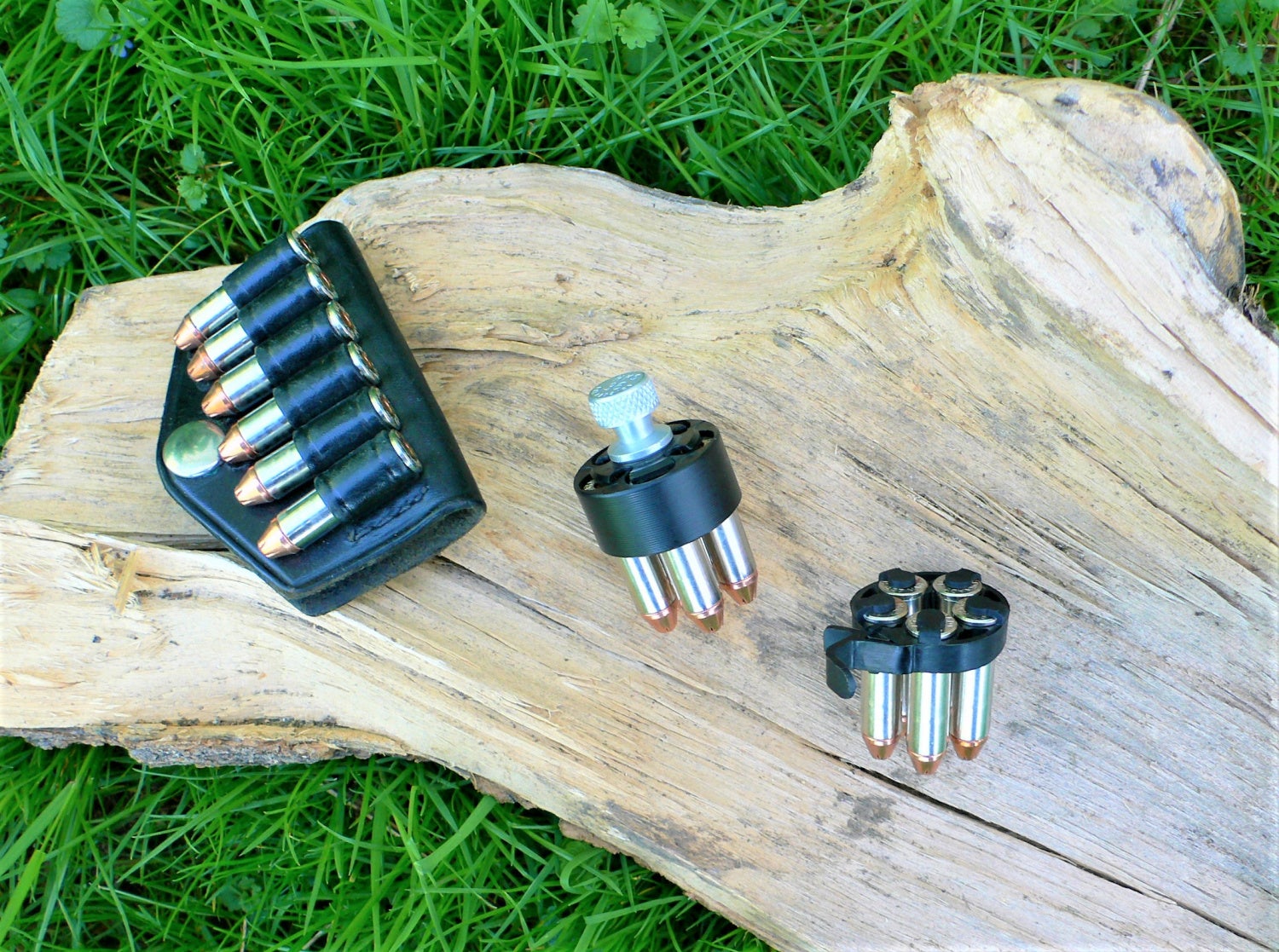
Three types of loading, (from left to right) Belt loops that hold individual cartridges; HKS speedloader, Ripcord speedloader.
Speedloaders come in several different shapes and sizes. The most well known are made by Safariland and HKS. They house the back portion of the cartridges and lock them in until needed. Using them to reload an empty cylinder requires you to insert the cartridges, bullet first into the chambers. Then, either press the speedloader against the back of the cylinder to release the cartridges, or push a button on top of the speedloader, or turn the knob to release (in the case of the HKS’s). Another type of speedloader emerged late last year called the Ripcord, which I reviewed earlier this year.
Moonclips are regarded as the fastest and most efficient way to reload (and unload) a revolver. The caveat to using moonclips is that your revolver’s cylinder needs to be properly cut to accept them. Moonclips were originally developed to allow rimless cartridges to be chambered and ejected from the cylinder. However, some revolvers that use rimmed cartridges have been factory cut (or can be, for a fee) to accept moonclips as well. Since the cartridges are held together by the clip before, during and after firing, they are all ejected together which makes the reload that much quicker.
first REVOLVER OPTIONS
The links below are from various revolver manufactures and you can see some of what’s available. For those of you looking to buy your first revolver, or as your first firearm ever, consider first what you’d like to do with it. Then choose the caliber that fits the usage(s) with which you intend to employ it. Click HERE or HERE for a list of things to look for when buying a used revolver.
For those that are looking for their first revolver, what are you leaning towards and what would you like to do with it? For those that already have revolvers, which was your first? What spurred your interest in revolvers?
We are committed to finding, researching, and recommending the best products. We earn commissions from purchases you make using the retail links in our product reviews. Learn more about how this works.
 Your Privacy Choices
Your Privacy Choices
